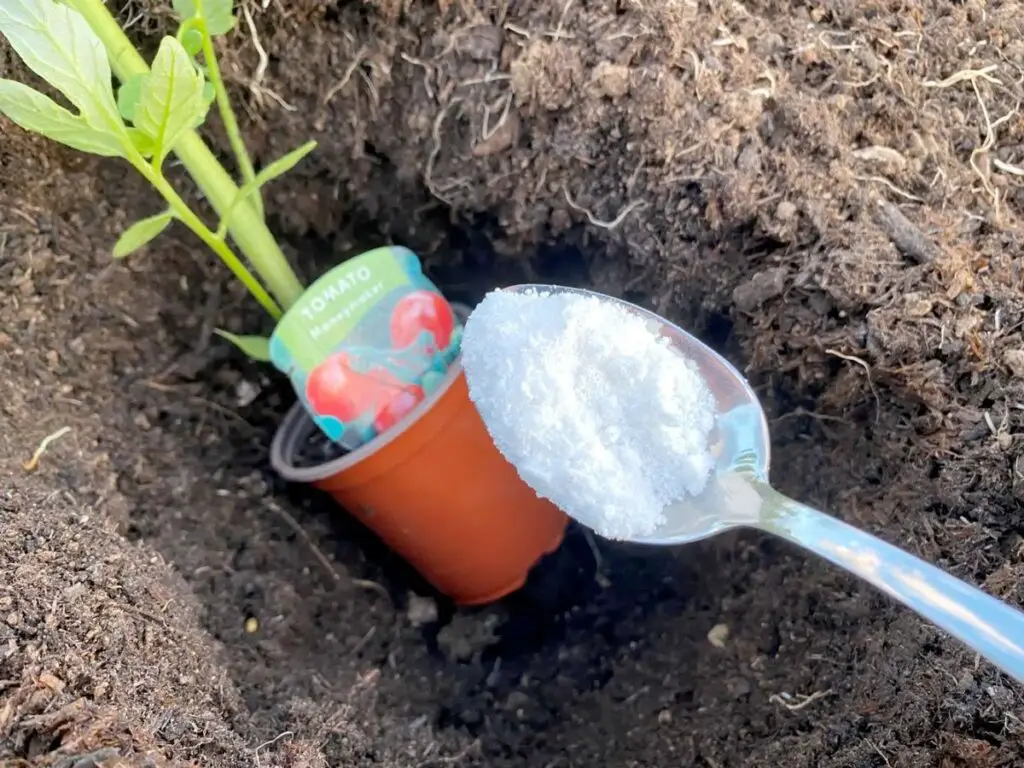Growing up, my Nana’s lawn was the stuff of neighborhood legends. Every blade of grass was pristine, standing at attention in vibrant green. It was the kind of lawn that practically invited you to kick off your shoes and run barefoot across it.
What always amazed me was that Nana never seemed to spend hours toiling away in the yard.
Unlike other homeowners, she had a secret—a simple, nearly effortless trick for eliminating those pesky brown patches that can mar a perfect lawn. I’ve adopted this trick for my own yard, and it’s time I shared it with you.

Why Brown Patches Form
Before diving into Nana’s magic remedy, it’s crucial to understand why brown patches appear in the first place.
These unsightly spots can be caused by a variety of factors, each requiring a slightly different approach:
- Drought Stress: During hot, dry spells, grass can become dehydrated and turn brown. Watering infrequently or not deeply enough can lead to these crispy, brown patches.
- Fungal Diseases: Warm, humid conditions are a breeding ground for fungi that can cause large, unsightly brown patches to spread almost overnight. These fungal issues often require a specific treatment to eliminate the problem.
- Pest Damage: Lawn pests like grubs, chinch bugs, and even certain insects can feed on the grass roots, leading to dead spots. Detecting and treating these pests is essential for a healthy lawn.
- Pet Urine: If you have dogs, their urine, high in nitrogen, can burn the grass and cause brown patches. Training pets to use a designated area or applying treatments can help mitigate this issue.
Identifying the cause of the brown patches is the first step. However, Nana’s trick is so effective that it can tackle these problems regardless of their source.

Nana’s Magic Formula: The Secret Weapon
Nana’s remedy is refreshingly simple. It doesn’t involve pouring harsh chemicals onto your lawn or spending endless hours reseeding and watering.
Instead, it’s about a natural, easy-to-prepare mixture from ingredients you likely already have at home. Here’s what you need:
- Epsom Salt: This household staple is rich in magnesium, a vital nutrient that helps grass produce chlorophyll. Magnesium is essential for vibrant green grass and overall plant health.
- Mild Dish Soap: A few drops of dish soap break the surface tension of the soil, allowing nutrients to penetrate more effectively. It also helps the solution adhere to the grass and soil.
- Water: The final and crucial ingredient, which ensures that the Epsom salt and dish soap are evenly distributed.
How to Apply the Solution
Here’s a step-by-step guide to applying Nana’s magic formula:
- Mix the Ingredients:
- In a large bucket or watering can, combine 2 tablespoons of Epsom salt with 2 gallons of water.
- Add a few drops of mild dish soap. Make sure the soap is free from harsh chemicals that could harm your lawn.
- Spot Treat the Brown Patches:
- Pour the mixture directly onto the brown patches. Ensure the area is thoroughly soaked but avoid making it waterlogged.
- Water Regularly:
- Over the next few days, water the treated area lightly but consistently. The Epsom salt will help the grass absorb essential nutrients, while the dish soap ensures even distribution.
- Monitor and Repeat if Necessary:
- After a week or two, you should start seeing the brown patches green up. If some patches are stubborn, reapply the mixture after two weeks.
Why This Works So Well
Epsom salt is a gentle, natural way to enhance lawn health. The magnesium in Epsom salt assists grass in absorbing crucial nutrients like nitrogen and phosphorus, which are essential for lush, green growth.
Unlike harsh chemical fertilizers, Epsom salt won’t burn your grass or harm the environment. The dish soap acts as a wetting agent, ensuring that the mixture penetrates deeply into the soil where it can be most beneficial.
This method works exceptionally well because it targets the root causes of brown patches without overwhelming your lawn with chemicals.
It provides a gradual but effective solution to restore the health and appearance of your lawn with minimal effort.
Prevention: Keeping Brown Patches at Bay
While Nana’s trick is fantastic for fixing brown patches, prevention is always better. Here are some proactive tips to help maintain a healthy lawn:
- Water Deeply but Infrequently:
- Water your lawn early in the morning for about 20 minutes, two to three times a week. This practice encourages deep root growth, making your grass more resistant to drought conditions.
- Mow High:
- Set your mower blade at its highest setting. Taller grass shades the soil, reducing evaporation and helping to prevent weed growth.
- Fertilize Wisely:
- Use a balanced fertilizer in the spring and fall. Be cautious not to over-fertilize, as too much nitrogen can cause brown patches. A well-balanced approach ensures your lawn receives the right nutrients without excess.
- Aerate the Soil:
- Aerate your lawn once a year to alleviate soil compaction. This allows nutrients and water to penetrate more effectively, promoting healthier grass growth.
- Control Lawn Pests:
- Regularly inspect your lawn for signs of pests. Treat infestations promptly to prevent damage and maintain lawn health.
Conclusion: A Lawn to Be Proud Of
Thanks to Nana’s simple yet effective trick, I’ve managed to keep my lawn green and healthy without spending countless hours in the yard. Those pesky brown patches are no longer a concern, thanks to a reliable, natural remedy that’s easy to use.



